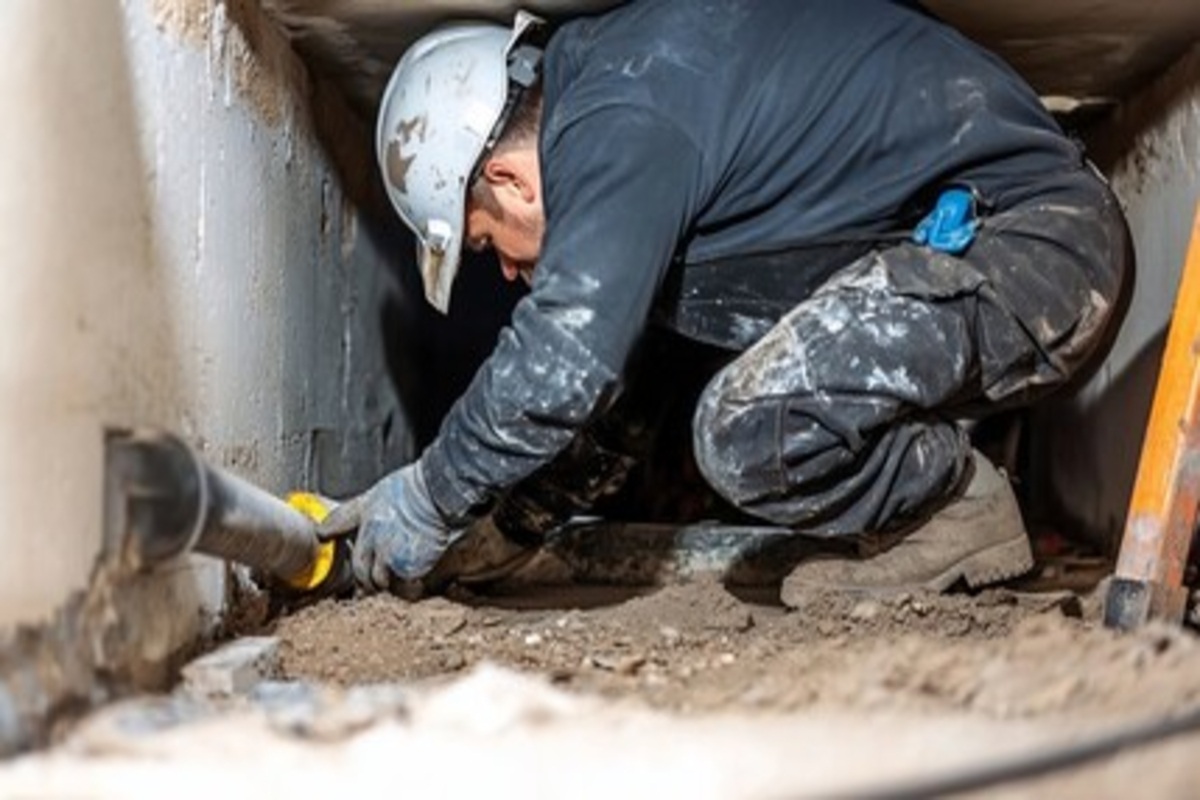If you’re noticing musty odors, damp spots on the floor, or water stains along the base of your walls, there’s a good chance your home needs better protection against moisture. One of the most reliable ways to solve these issues is by installing a basement drainage system designed specifically for your home’s foundation and soil conditions.
We get a lot of calls from homeowners who’ve tried temporary fixes like dehumidifiers or patching wall cracks with sealant, only to see the problem return after the next big rain. At KC Pier, we help homeowners understand what’s happening below the surface and what type of drainage solution works long-term.
What Is a Basement Drainage System?
A basement drainage system is designed to collect and redirect water away from your home’s foundation before it can cause damage. These systems typically include interior or exterior drainage pipes, sump pumps, and discharge lines. The goal is to relieve hydrostatic pressure around your foundation and keep water from seeping through cracks or joints.
Types of Basement Drainage Solutions
We typically recommend one of the following based on your home’s structure and water issues:
- Interior French Drain System
Installed along the inside perimeter of your basement, this system channels groundwater into a sump pit where it’s pumped out of your home.
- Exterior Drain Tile System
Installed outside your foundation at the footing level, this system intercepts water before it reaches the basement walls. It’s effective but usually requires excavation.
- Sump Pump Systems
A sump pump is the heart of most drainage systems. It collects water and actively pumps it away to a safe discharge point outside your home.
- Grated Channel Drains and Floor Drain Tie-Ins
These are useful for redirecting surface water in utility rooms or around basement entry points.
Signs You May Need a Basement Drainage System
You’re Seeing Water or Moisture After Rain
One of the most obvious signs is water on the basement floor or wet walls after a storm. Even if it dries up quickly, that moisture can promote mold growth or damage your home’s structure over time.
Your Basement Smells Damp or Musty
Moisture that seeps in regularly, whether you can see it or not, often causes musty smells. That’s usually mildew or mold growing behind the walls or under the flooring.
Cracks Are Appearing in Your Foundation Walls or Floor
Water pressure from the soil around your foundation can lead to cracks. Once these form, water finds a path into your basement.
You’ve Already Tried Quick Fixes That Didn’t Work
Many of our customers start with DIY fixes like waterproof paint or filling small cracks. These might delay the issue, but they don’t address the real source of the water intrusion.
How We Customize Basement Drainage Systems for Each Home
Every home has different soil conditions, foundation styles, and water issues. That’s why we don’t take a one-size-fits-all approach. During our inspection, we look for water entry points, assess the slope of your yard, and evaluate the existing drainage setup.
Then we create a system that addresses both current problems and future risks. In many cases, we combine multiple solutions, such as pairing a French drain with a high-efficiency sump pump and battery backup.
The Long-Term Benefits of a Proper Drainage System
Protects Your Home’s Structural Integrity
Keeping water away from your foundation helps prevent cracks, bowing walls, and floor heaving.
Improves Indoor Air Quality
By controlling moisture, you reduce the chance of mold, mildew, and allergens affecting your home’s air.
Preserves Property Value
A dry basement is a strong selling point and helps avoid costly repairs down the road.
Allows for Basement Finishing
If you’re planning to finish your basement or use it for storage, a reliable drainage system is essential for protecting your investment.
Is a Basement Drainage System Worth It?
For homeowners dealing with repeated water issues, a basement drainage system isn’t just worth it; it’s necessary. Water damage doesn’t fix itself. Over time, it can compromise your home’s foundation, damage belongings, and cost thousands in repairs.
We’ve helped many Kansas City homeowners turn wet, musty basements into dry, usable spaces with the right drainage solution. And we’re happy to walk you through what’s involved, what it will cost, and how long it will take.
Need Help Keeping Your Basement Dry?
If your basement shows any of the signs we’ve covered, reach out for a free evaluation. At KC Pier, we specialize in tailored drainage systems that solve the problem at its source. We’ll explain your options, answer your questions, and help you choose the right solution for your home.
Contact us today to schedule your inspection and take the first step toward a dry, worry-free basement.

